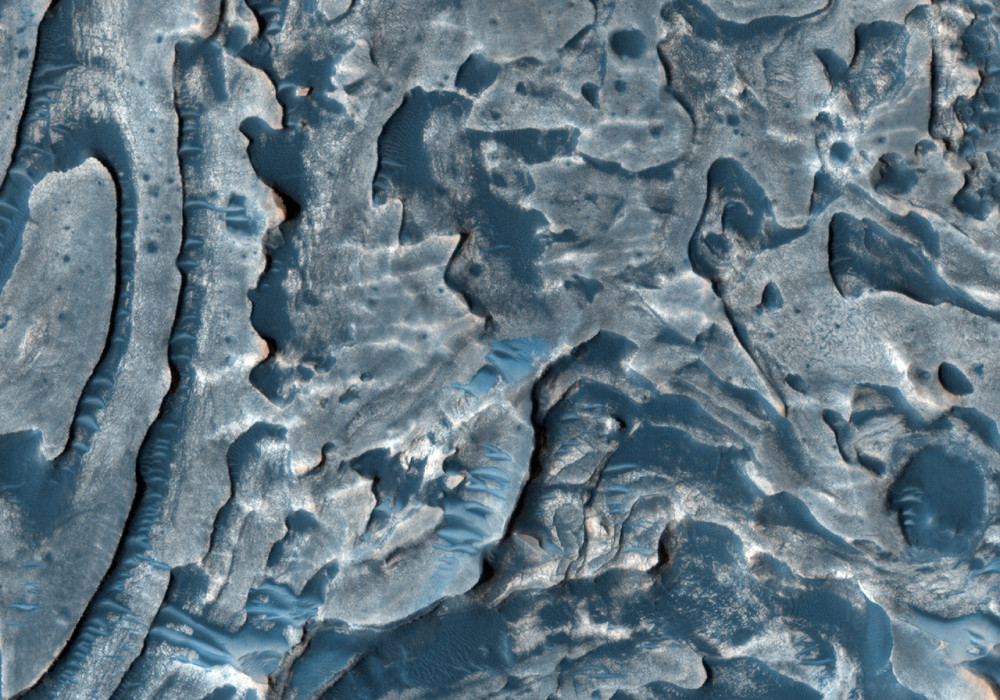This wrinkle ridge crosses through a mound of layered material that’s been exposed by erosion.
This observation poses an excellent opportunity to look at the internal structure of a wrinkle ridge. We can compare the topography and internal structure of this wrinkle ridge at this location to exposures in other terrain to see if the local bedrock has a noticeable effect on ridge morphology or growth.
The layers also represent stratigraphic markers that we know were once continuous – examining faults that cross-cut and offset layers can yield good information about the amount and direction of movement that took place along that fault.
This caption is based on the original science rationale.
Written by: HiRISE Science Team (9 November 2011)
This is a stereo pair with ESP_020850_1845 .
More info and image formats at http://hirise.lpl.arizona.edu/ESP_020705_1845
Image: NASA/JPL/University of Arizona
